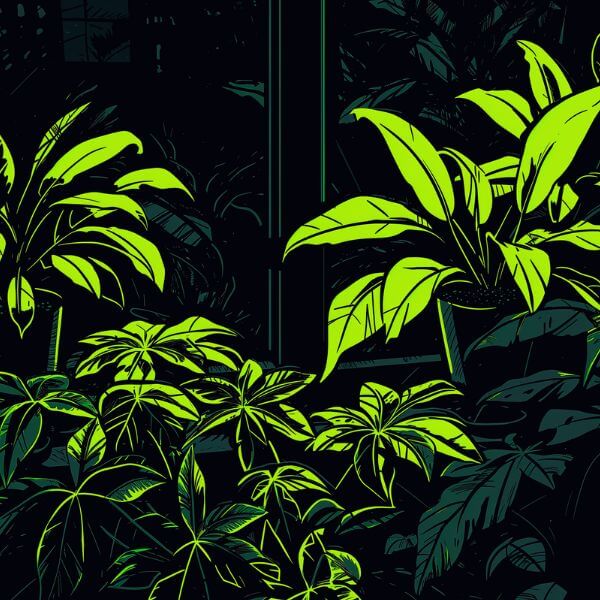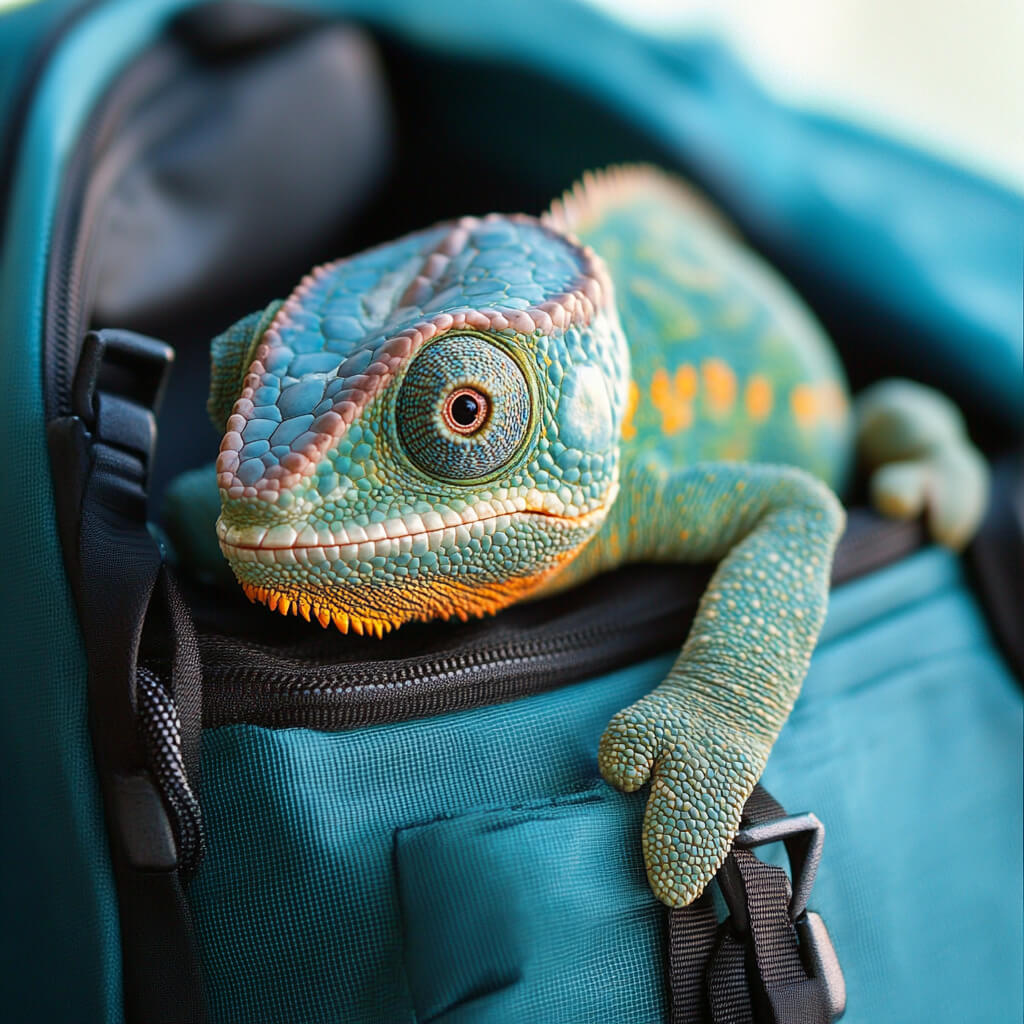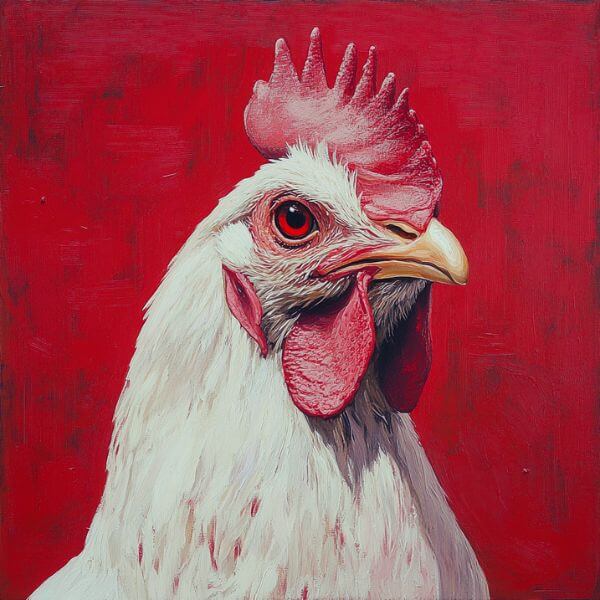No, they shouldn’t. Stay away from this plant.
Pothos or commonly known as the Devil’s Ivy contains calcium oxalate crystals, which are toxic to many animals and reptiles.
Chameleon diet essentials
Now, let’s take a quick look at what chameleons typically eat.
These colorful reptiles have specific dietary needs that are crucial for their health and well-being.
What do chameleons eat in the wild?
In their natural habitats, chameleons are primarily insectivores. Their diet consists of:
| Common chameleon food | Frequency |
| Crickets | Daily |
| Flies | Often |
| Grasshoppers | Regularly |
| Roaches | Sometimes |
| Worms | Occasional |
While insects make up the bulk of their diet, chameleons also nibble on vegetation from time to time.
This brings us to an important question: what plants are safe for chameleons to eat?
Pothos plants: A closer look at the devil’s ivy
Pothos, also known as devil’s ivy, is a popular houseplant loved for its easy care and attractive foliage.
But when it comes to chameleons, this common plant can be trouble.
Common varieties of pothos
There are several types of pothos plants, including:
- Golden pothos
- Marble queen pothos
- Neon pothos
- Jade pothos
Pothos toxicity in animals
Here’s the kicker: pothos plants contain calcium oxalate crystals, which are toxic to many animals, including reptiles like chameleons. These crystals can cause irritation and more severe health issues if ingested.
The dangers of pothos for chameleons
Pothos leaves are toxic to chameleons. If your pet chameleon eats pothos, it could experience:
- Mouth and throat irritation
- Difficulty swallowing
- Digestive issues
- In severe cases, more serious health problems
Why chameleons might be attracted to pothos
Despite the dangers, chameleons might still be drawn to pothos plants.
The leaves are bright and attractive, and chameleons are naturally curious creatures.
Plus, in their search for hydration, they might lick water droplets off pothos leaves, accidentally ingesting some of the plant in the process.
Risks of chameleons eating pothos
Let’s break down the specific risks associated with chameleons munching on pothos leaves.
Toxic compounds in pothos leaves
The main culprit in pothos toxicity is calcium oxalate crystals. These tiny, needle-like structures can cause immediate discomfort and long-term health issues.
Symptoms of pothos poisoning in chameleons
If your chameleon has eaten pothos, watch out for these signs:
| Immediate effects | Long-term consequences |
| Drooling | Reduced appetite |
| Pawing at mouth | Weight loss |
| Swollen tongue | Lethargy |
| Vomiting | Weakened immune system |
Safe plant alternatives for chameleon habitats
Don’t worry, chameleon owners! There are plenty of safe plants you can use to create a lush, natural environment for your pet.
Non-toxic plants for chameleon terrariums
Here’s a list of chameleon-friendly plants:
- Ficus benjamina (Weeping fig)
- Hibiscus
- Schefflera (Umbrella plant)
- Dracaena
- Spider plant
Benefits of safe live plants in chameleon enclosures
Including safe, live plants in your chameleon’s habitat can:
- Provide natural climbing structures
- Help maintain humidity levels
- Offer hiding spots for stress relief
- Create a more naturalistic environment
Ensuring chameleon safety around pothos
If you’re a plant lover and a chameleon owner, you might be wondering how to keep both your pothos and your chameleon.
Here are some tips:
Proper chameleon enclosure setup
- Use a well-ventilated terrarium
- Include plenty of branches for climbing
- Maintain proper temperature and humidity levels
- Choose safe plants for decoration
Keeping pothos out of reach
If you must have pothos in your home:
- Place pothos plants in rooms your chameleon doesn’t have access to
- Use hanging planters to keep pothos elevated and out of reach
- Consider artificial pothos for decoration in chameleon areas
What to do if your chameleon eats pothos
Accidents happen. If you suspect your chameleon has nibbled on pothos, here’s what to do:
1. Recognizing signs of plant poisoning
Watch for:
- Excessive drooling
- Loss of appetite
- Lethargy
- Swelling around the mouth
2. Emergency steps and when to seek veterinary care
- Remove any remaining plant material from your chameleon’s mouth
- Rinse their mouth gently with water
- Call your exotic pet vet immediately for advice
- Monitor your chameleon closely for any worsening symptoms
Remember, when it comes to potential poisoning, it’s always better to err on the side of caution and consult a professional.
FAQs about chameleons and pothos
Can chameleons eat any part of the pothos plant safely
No, all parts of the pothos plant are toxic to chameleons.
How quickly do symptoms appear if a chameleon eats pothos?
Symptoms can appear within minutes to hours after ingestion.
Are some chameleon species more resistant to pothos toxicity?
While tolerance may vary slightly, all chameleon species are at risk from pothos toxicity.
Can the smell of pothos harm chameleons?
The smell alone isn’t harmful, but it’s best to keep pothos plants away from chameleon habitats to avoid accidental ingestion.
What should I do if I have pothos in my home and want to get a chameleon?
Consider rehoming your pothos plants or keeping them in separate, inaccessible rooms. Alternatively, you could replace them with chameleon-safe plants.
Conclusion
So, can chameleons eat pothos? The answer is a resounding no.
While pothos might be a great addition to your home decor, it’s definitely not chameleon-friendly.
Keep your scaly friend safe by choosing appropriate plants for their habitat and keeping toxic plants like pothos out of reach.
Remember, a happy chameleon is a healthy chameleon.
By providing a safe environment and a proper diet, you’re setting your colorful companion up for a long and vibrant life.
Now, go give your chameleon a cricket and admire its color-changing skills!







Leave a Reply